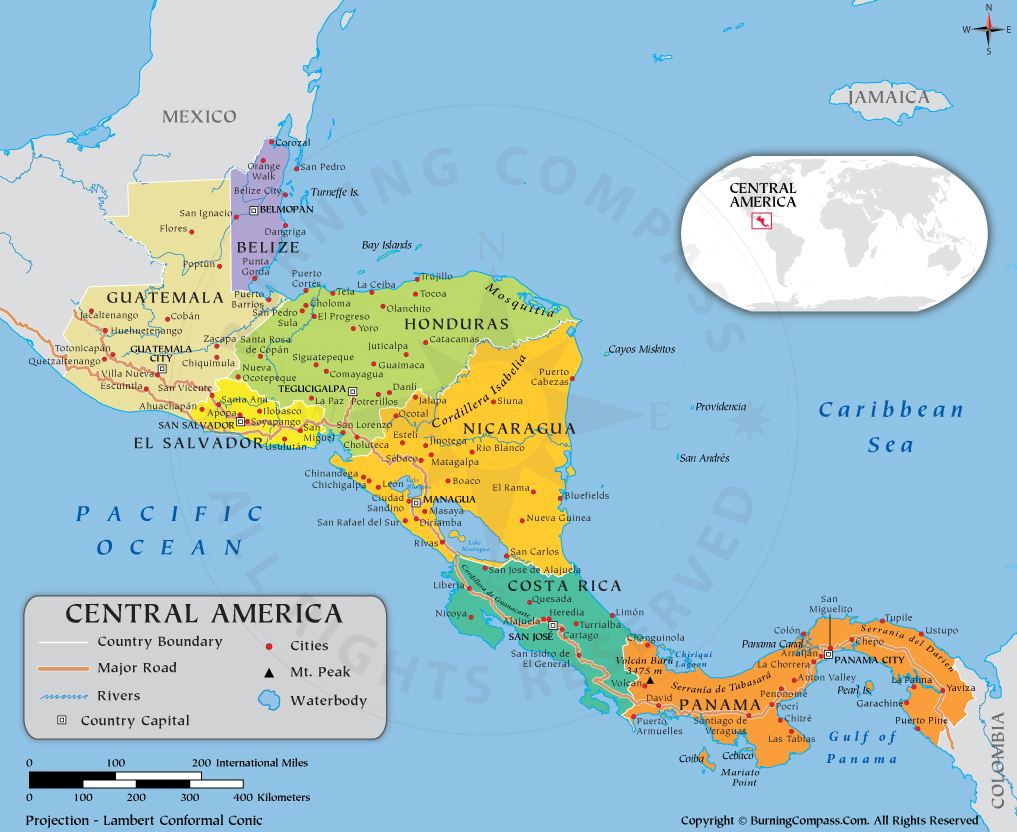In October, Honduras and Nicaragua continued with double-digit year-on-year inflation figures. In Guatemala, the consumer price index (CPI) accumulated variation was the highest in the last 14 years.
Costa Rica, on the other hand, achieved its second consecutive month without registering rising inflation; the Dominican Republic added three consecutive months below the 0.30% threshold; and in El Salvador, despite two consecutive declines, the indicator is still two points higher than in October 2021, when it was 5.49%.
In Panama, where the authorities have not yet published the results for October, the International Monetary Fund (IMF) indicated that inflation will be 3% in 2023 after closing at 4.4% this year.

“Without exception, all countries are going through a phenomenon of high inflation, and this is an inflationary process, that is, there are multiple causes that are causing it and are strongly impacting the purchasing power of most families in Central America,” said Pedro Argumedo, economic analyst of the Salvadoran Foundation for Economic and Social Development (Fusades), to the platform Centroamérica Economía.
Argumedo explained that external factors have mainly put upward pressure on inflation, but also internal facts that have created different dynamics in each region’s countries.
THE TREND IN NICARAGUA AND HONDURAS
In Nicaragua, October inflation was 1.33% (0.75% in October 2021). Meanwhile, accumulated inflation stood at 9.08% (4.27% in October 2021) and inter-annual inflation at 12.16% (6.41% in October 2021), informed the National Institute of Development Information (Inide).
In the monthly inflation, positive contributions were observed in the twelve divisions that make up the CPI basket, highlighting price increases in the following divisions: food and non-alcoholic beverages (2.23%).
The Central Bank of Honduras (BCH) reported a monthly CPI variation of 0.66%, below the monthly average registered between January and September this year (0.82%). With this result, accumulated inflation reached 8.33%, while interannual inflation stood at 10.18%.
The monthly rate was mainly influenced by increases in the prices of certain perishable foods, such as vegetables and dairy products, associated -in part- with hurricanes Ian and Julia, as well as some distortions in their commercialization in the domestic market, informed the monetary authority.
In addition, international oil prices continue to impact the increase of fuel prices at a national level for both vehicular and domestic use.
FEARS IN COSTA RICA
The Central Bank of Costa Rica (BCCR) acknowledged that for the remainder of 2022 and part of 2023, inflation would remain above the tolerance range compared to the 4% target proposed by the issuer.
On October 31, BCCR president, Roger Madrigal, told local media that “inflation is still high” but assured that “there are signs that indicate that the maximum was reached in August”. Projections indicate that inflation will close the year at 9.4% and will return to the entity’s target range until 2024.
This year, the BCCR has raised interest rates six times to combat inflation, following other central banks worldwide.
WHAT IS HAPPENING IN GUATEMALA AND EL SALVADOR
In Guatemala, the National Institute of Statistics (INE) reported that price increases in products, including fuels, had caused accumulated inflation during 2022 to be the highest since 2008 when the Central American country closed at 11.36%.
However, the highest rate was recorded in 1986, with 36.93%.
For 2022, the Monetary Board of the Bank of Guatemala estimated inflation between 3% and 5%.
Still, the Russian military operation in Ukraine that began at the end of February caused a world economic crisis, including in the Central American country, where 70% of its inflation is imported.
El Salvador has also been impacted by the context of an escalation in prices driven by the war conflict and the economic effects derived from the covid-19 pandemic.
In that country, its Central Bank forecasts inflation will begin to decline in 2023 and stabilize until 2024.
BEHAVIOR IN THE DOMINICAN REPUBLIC
Monetary authorities in the Dominican Republic reported that interannual inflation, measured from October 2021 to October 2022, maintained a downward trajectory at 8.24%, a fall of 140 basis points compared to the peak of 9.64% observed in April of this year, so it is forecast to be around 7% at the end of 2022.
This downward trend in inflation allows projecting that inflation would be converging towards the target range of 4% ± 1% before the end of the second quarter of 2023, said the Central Bank.
Despite the slower pace of inflation growth in Central America, the IMF’s most recent Economic Outlook Report warned that headline inflation will peak in late 2022 and remain elevated “for longer than expected and decline to 4.1% by 2024”.
With information from Bloomberg

